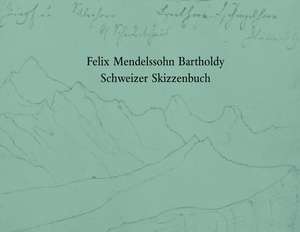Felix Mendelssohn Bartholdy. Schweizer Skizzenbuch
Editat de Hans-Gunter Kleinde Limba Germană Hardback
Preț: 440.78 lei
Preț vechi: 544.17 lei
-19% Nou
Puncte Express: 661
Preț estimativ în valută:
84.34€ • 91.90$ • 71.07£
84.34€ • 91.90$ • 71.07£
Carte indisponibilă temporar
Doresc să fiu notificat când acest titlu va fi disponibil:
Se trimite...
Preluare comenzi: 021 569.72.76
Specificații
ISBN-13: 9783895004834
ISBN-10: 3895004839
Pagini: 54
Dimensiuni: 292 x 236 x 10 mm
Greutate: 0.48 kg
Editura: Dr. Ludwig Reichert
ISBN-10: 3895004839
Pagini: 54
Dimensiuni: 292 x 236 x 10 mm
Greutate: 0.48 kg
Editura: Dr. Ludwig Reichert
